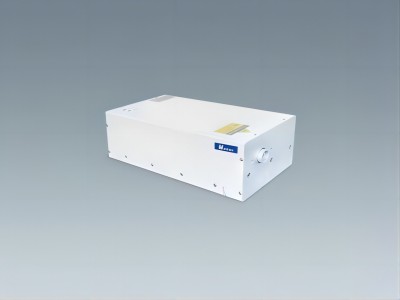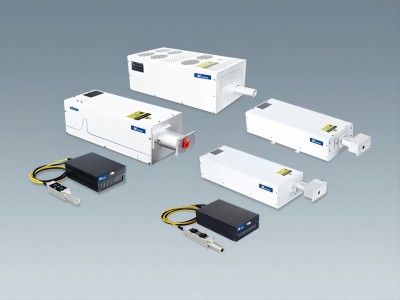An in-depth explanation of the innovative applications of lasers in the new energy industry
Laser technology is being used more and more in the new energy sector, mainly in solar cell manufacturing, lithium battery welding, and the production of other new energy equipment. Below are the advantages of laser technology in these areas, specific applications, and the range of different laser types for processing.
Advantages
- High-precision processing: laser technology is capable of realizing precise processing at the micron level, which is suitable for the manufacture of complex structures and tiny parts in new energy equipment.
- Non-contact processing: laser processing is a non-contact processing method, which reduces the physical damage and deformation of the material and improves the reliability and life of the product.
- High efficiency: laser processing is fast, which can significantly improve productivity and shorten the manufacturing cycle.
- Flexible: laser equipment can be programmed to flexibly adjust processing parameters to adapt to different materials and process requirements.
- environmental protection and energy saving: no chemical waste is generated during laser processing, which is in line with the requirements of environmental protection, while the energy consumption of laser equipment is relatively low.
Appliance
- Solar Cell Manufacturing
Laser Scribing and Dividing: Used for cutting and scribing of polysilicon and monocrystalline silicon solar cell wafers to improve the conversion efficiency of the cell.
Laser doping: Through laser doping technology, selective emitters are formed on the surface of solar cells to further enhance cell performance.
Laser Welding: Used to connect solar cell modules to ensure strong welding joints, reduce contact resistance and improve overall conversion efficiency.
- Lithium battery manufacturing
Electrode Material Processing: Laser cutting and punching technology is used to process electrode materials to ensure precise dimensions and smooth edges to optimize battery performance.
Battery Packaging Welding: Laser welding technology is used for battery packaging to ensure high strength and airtightness of the welded parts, prolonging the life of the battery.
Battery assembly welding: Used to weld the internal connection wires and protection plates of the battery pack to improve the safety and stability of the battery pack.
- Fuel Cell Manufacturing
Proton Exchange Membrane Processing: Laser cutting is used to accurately process the proton exchange membrane in the fuel cell to ensure its size and shape are accurate.
Electrode Assembly Welding: Laser welding is used to connect the electrode assemblies in fuel cells to ensure welding strength and conductivity.
Processing a range of different laser types
Green laser
Processing range
1. Transparent and translucent materials
Glass: for cutting glass covers for solar cells and other optoelectronic devices.
Transparent ceramics: Processing of transparent ceramic materials for encapsulation and protection of various optoelectronic devices.
2. Metallic materials
Copper and Aluminum: Green light laser has high absorption for high reflectivity metals such as copper and aluminum, which is suitable for fine cutting and welding.
Application Scenarios
1. Solar cell manufacturing
Laser Scribing and Segmentation: High-precision scribing and segmentation to improve the efficiency and quality of the cells.
Laser marking: Marking on modules to ensure traceability and quality control.
2. Glass Processing
Glass cover cutting: high-quality cutting for solar cells and photovoltaic devices.
Infrared Laser
Processing range
1. Metal materials
Electrode materials: Cutting and welding of electrodes for lithium batteries and other batteries.
Battery Packaging: Welding of battery packages to ensure air tightness and reliability.
2. Plastic and composite materials
Battery components: Welding of plastic and composite battery components to ensure robustness and safety.
Battery Separators: Perforation of lithium battery separators to improve battery performance and safety.
Application Scenarios
1. Lithium battery manufacturing
Electrode material cutting and welding: efficient, high-quality processing.
Battery package welding: Ensure strength and durability of welded joints.
2. Plastic and composite material processing
Battery assembly welding: firm, safe, and improve the overall performance of the battery.
UV Laser
Processing Scope
1. Non-metallic materials
Battery diaphragm: fine perforation to improve battery performance and safety.
Plastic shells: high precision cutting and welding for battery and other component shells.
2. Microelectronic devices
Thin-film solar cells: precision machining for solar cell films.
Application Scenarios
1. Solar cell manufacturing
Precision cutting and marking: for the processing of thin-film solar cells to improve conversion efficiency.
2. Battery Module Processing
Plastic shell cutting and welding: to ensure shell precision and strength.
Fiber Laser
Processing Scope
1. Metal materials
Steel, stainless steel, aluminum: widely used for cutting and welding of metal materials.
Copper foil and aluminum foil: used for cutting of battery pole pieces.
Application Scenario
1. Lithium battery manufacturing
Cutting and welding of pole pieces: efficient and precise processing to improve the efficiency of battery manufacturing.
2. Solar Cell Manufacturing
Metal welding: for solar cell frames and supports.
Picosecond and femtosecond lasers
Processing Range
1. Microfabrication
High hardness materials: For processing hard and brittle materials and multilayer materials.
Thin film materials: Fine surface treatment and microporous processing.
Application Scenarios
1. Solar cell manufacturing
Fine surface treatment: Improvement of photoelectric conversion efficiency of solar cells.
2. Microelectronic devices
High-precision microvia processing: for precision manufacturing of microelectronic devices.
Summary
The application of laser technology in the field of new energy provides efficient, precise, and environmentally friendly solutions for equipment manufacturing and processing. Different types of lasers, according to their characteristics, play their unique advantages in the manufacturing process of solar cells, lithium batteries, and fuel cells, promoting the continuous progress and development of new energy technology.







